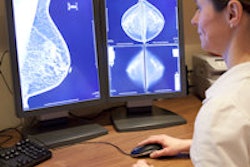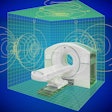In the mammography market, 2D digital flat-panel detector mammography was the leading technology in both Western Europe and North America in 2014, but 3D tomosynthesis systems are forecast to surpass 2D mammography as the largest technology segment in North America by 2019, according to analyst firm IHS Medical Technology.
In North America, 3D tomosynthesis systems are purchased for both diagnostics and screening, broadening usage and demand. The healthcare system also is a key driver, as system purchase is funded and decided upon by each individual state or health provider without requiring national consensus, the firm noted.
In contrast, the majority of screening in Western Europe is funded and governed at a national level, slowing the adoption curve for 3D tomosynthesis, IHS said. In Western Europe, the transition is forecast to take longer, due to purchasers opting for upgradable 2D systems over standalone 3D digital systems.
The 2D mammography systems are popular in price-sensitive Europe due to the lower average selling price, a product of aggressive competition and maturing technology, according to IHS. Also, clinical studies confirm its benefits -- a necessity for regional health organizations to purchase the systems.
Trials on 3D tomosynthesis are also underway, though some studies show 3D tomosynthesis systems offer no significant additional benefit when compared with 2D, while others argue evidence to support the cost is justified.
To counter this, vendors have introduced "future-proofed" 2D digital mammography systems that can be upgraded through a software upgrade (for additional cost) to provide 3D capability. This upgradable system is more popular in Western Europe and still fits within national screening guidance for many countries, IHS said. Until large-scale trials and new evidence emerges, the upgradable 2D digital mammography system is predicted to dominate demand in Western Europe.



















